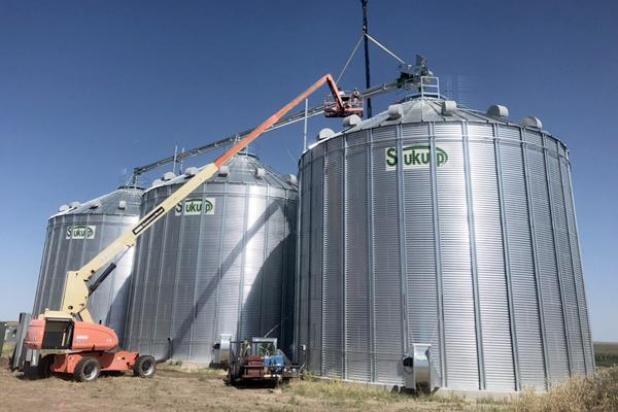
The last piece of pipe is hung on the grain handling system of the grain bin.
How do those bins get there?
Driving across the midwestern landscape, it’s almost impossible to miss the myriad of large grain bins shining in the sun.
How did all of these vast structures come to be, though?
Jared Potts of Western Nebraska Rebar has 15 years of experience working on grain bins. He explained that the process is simple but can take some time and hard work.
Before construction can even begin, the Diggers Hotline must be called, as well as each utility company. These contacts will provide information about gaslines, buried cable, required distance from electrical lines and more.
Once the area is confirmed to be a clear, quality spot for a bin, the erection crew can move in and start construction.
First, a mini excavator and skid steer are needed to form the area where concrete will be poured.
The excavator will dig footings, which can be two to three feet in the ground around the entire pad. The skid steer helps level and clear the area for concrete pouring.
The pad forms are set up next, which sit about a foot and a half to two feet high around the outside of the concrete circle.
Rebar is set inside the area where concrete will go and then the space is filled in with concrete.
Once the concrete has set, the bin building process begins. The concrete portion of this process should take around three days on average, assuming nothing like weather, for example, slows it down.
Grain bins are made of pre-shaped steel sheets to form rings. These make up the walls of the bin.
One ring is set on top of the concrete, and then the roof is constructed. The roof bolts to the first ring and a manual or hydraulic jack is used to raise the ring and roof.
Click here to read the rest of the article in our FREE online section: A Salute to Grain.
